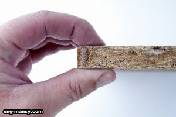CARBON FIBERS AND THEIR APPLICATION IN CIVIL ENGINEERING 3 from 7

Applications in Civil engineering
Civil and structural engineering applications differ from many of the other applications in several ways.
The loads are generally higher-with the forces to be resisted of the order of tens, if not hundreds, of tones.
The loads are often of long duration (years not hours) and long term stiffness (including bothelastic stiffness and creeps), this often being the governing criteria.
To be effective, the fiber yarn needs to aggregate into a sufficiently large unit to apply a significant force.
The application fields of CFRP include bridges, buildings, tunnels, chimneys and others like electric poles, box culverts, among others.
Out of these, applications in bridges and buildings occupy the majority of the whole market.
Recently, more applications could
be found in repairing tunnel lining. Studied in an academic context as to its potential benefits in construction, it has also proved itself as cost-effective in a number of field applications like strengthening concrete, masonry steel, cast iron, and timber structures.
Its use in industry can be either for retrofitting to strengthen an existing structure or as an alternative reinforcing (or pre- stressing material) instead of steel from the outset of a project.
The bridge piers, girder, plates and building beams, columns and plates are the most common to be strengthened.
Bridge and Chimney retrofitting applications have witnessed great success owing to the use of carbon fiber reinforced polymer (CFRP) composite technology Approximately, a little less than a quarter of the world’s bridges are being classified as either functionally obsolete or structurally deficient.



